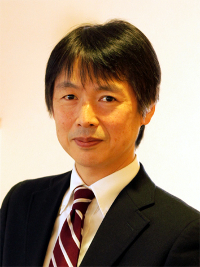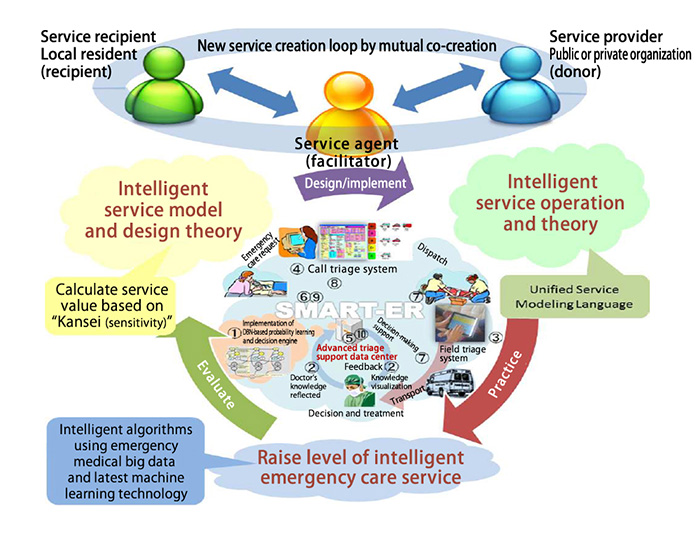Research Projects Selected in FY2013
< Solution-Oriented Service Science Research, Type A >
Construction of foundation for smart social service systems, creating secure and safe community through the advancement of emergency medical care

[] Project Leader
Tomoki HAMAGAMI
Professor, Faculty of Engineering, Yokohama National University
[] Targets
- Clarify the design and operation methodology for regional co-creation and knowledge-feedback services, and create an intelligent public service platform
- Propose a new service model combining methodologies for evaluation and design of service evaluation, economy, and acceptability based on “sensitivity”
- With emergency care service as the core, attempt to expand to other specific social services that create local safety and assurance and to contribute to establish service science
[] Approach
- (a) Realize and advance intelligent call triage using emergency medical big data
- (b) Design and implement field triage for migrating to regional co-creation and knowledge-feedback service
- (c) Perform analysis of application to other services and analyze based on examples of best practices
- (d) Study service evaluation methodology based on “Kansei (sensitivity)”
- (e) Study service process models focusing on “Kansei (sensitivity)” and design methodology for improvement
- (f) Develop a theory for creating regional co-creation and knowledge-feedback service
An emergency care system is an important social service providing safety and assurance to the local society. As demands grow with changes in social structures, however, the increased burden on the service providers (donors) and drop in service quality to residents (recipients) are becoming a problem.
This project is aimed at raising the level of emergency care services and implementing them in society. In this research and development, techniques and methodologies are to be established for evaluating, designing, and operating new services. This will involve representing services from the standpoints of benefits, risk, and costs, and using the systematic description to evaluate societal acceptance by local residents and other stakeholders. The results are to be fed back into service design, establishing a loop model that will lead to more efficient operation. These efforts will help raise the quality of emergency care services, reduce their costs, and encourage public acceptance.

This material belongs to the folloeing:
Project: Construction of foundation for smart social service systems, creating secure and safe community through the advancement of emergency medical care
Project Leader:Tomoki HAMAGAMI




